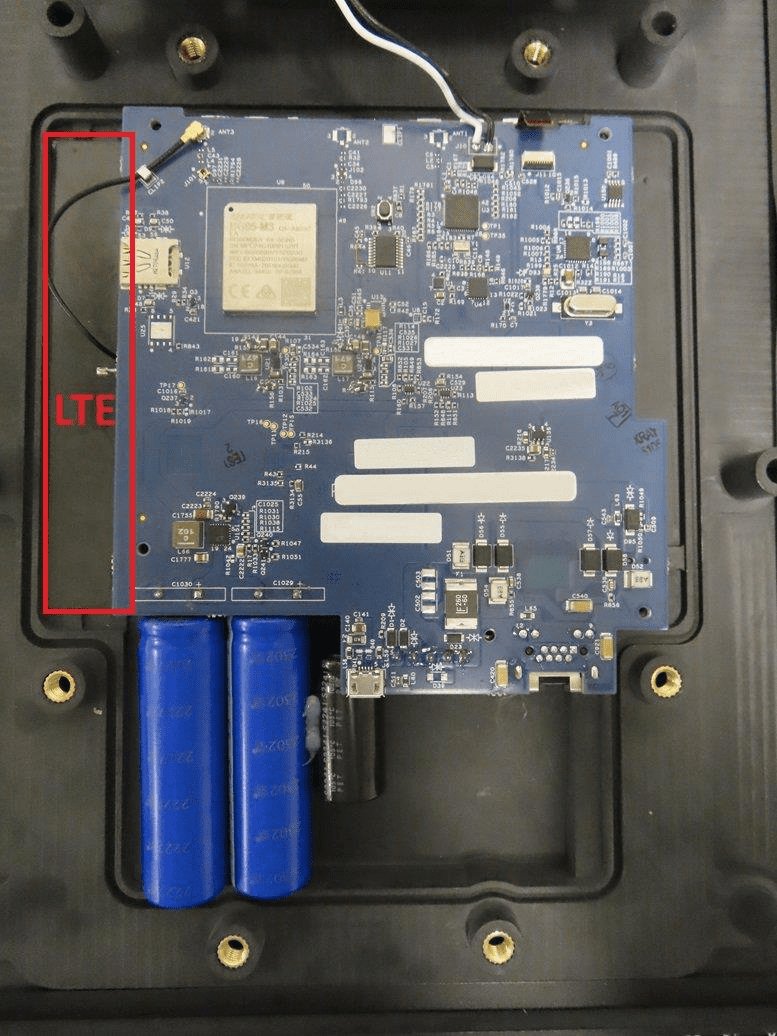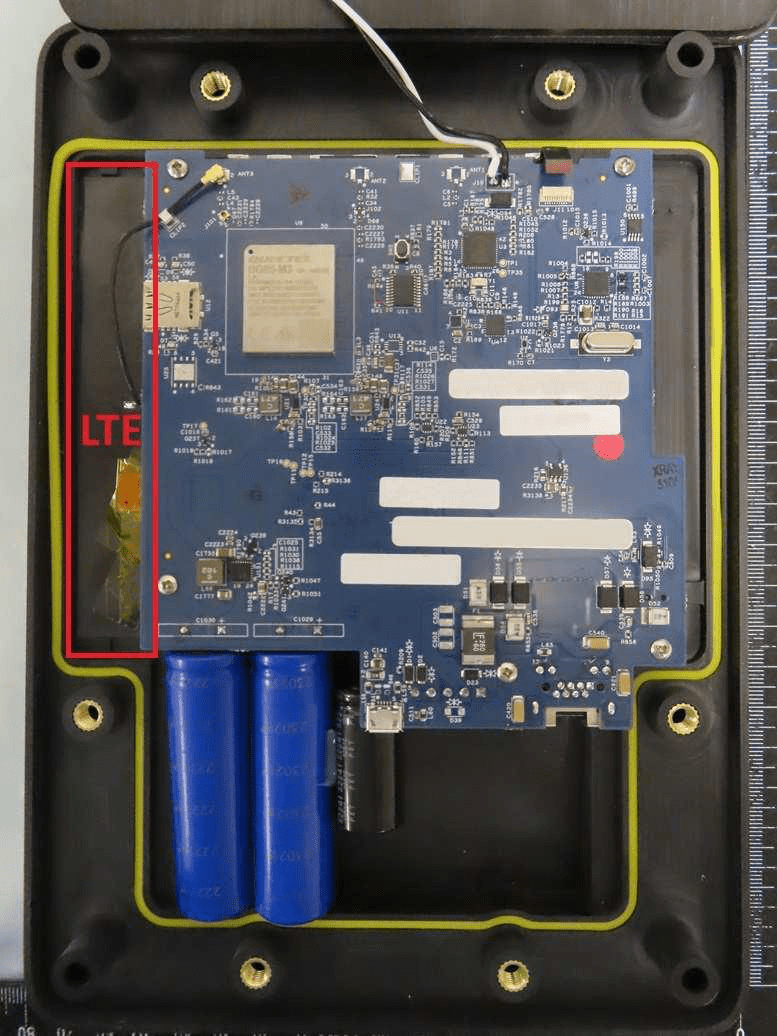Introduction
The Ring WallCall Unit by FCC.gov represents a new generation of smart access control devices, blending robust connectivity with versatile installation options. Designed for seamless integration into modern security and building management systems, this device enables secure, always-on communication between entry points and centralized monitoring solutions. Whether deployed in residential, commercial, or gated community environments, the WallCall Unit offers flexibility, reliability, and advanced wireless features.
A crucial milestone for any wireless communication device is FCC certification—and the Ring WallCall Unit, under FCC ID 2AEUPBHAKE001, has successfully met these stringent standards. This certification not only makes it legal for sale and operation in the United States, but also ensures the device adheres to strict limits on radio frequency (RF) emissions and electromagnetic interference (EMI). In this article, we’ll dissect the WallCall Unit’s standout features, technical specifications, internal components, and regulatory highlights, providing a comprehensive look at what sets this device apart in the crowded access control market.
Key Features & Specifications
The Ring WallCall Unit stands out for its flexible power options, compatibility, and installation versatility. Below is a detailed breakdown of its key features and technical specifications, highlighting their practical implications for installers and end-users alike.
Key Features
-
Dual Power Options:
Supports both hard-wired (10-24VAC/DC) and Power over Ethernet (PoE Type1, 10/100 Base) power sources. This flexibility ensures easy integration with existing infrastructure or new installations, reducing complexity and cost. -
Access Control System Compatibility:
Engineered to interface with a variety of existing access control systems, making upgrades or retrofits straightforward for property managers and security professionals. -
LED Status Indicators:
Integrated LED lights provide real-time visual feedback during installation and servicing, streamlining troubleshooting and setup. -
Polarity Agnostic 5-Pin Terminal Block:
Simplifies wiring by eliminating concerns about polarity, enhancing reliability and minimizing installation errors. -
Complete Mounting Kit:
Bundled with a mounting plate, junction box, and all necessary hardware, the unit supports a range of mounting scenarios—custom fabricated, post-mounted, gate-mounted, or wall-mounted—maximizing deployment flexibility. -
Tamper Switch Mechanism:
Security is enhanced via a built-in tamper switch, which can trigger alerts if unauthorized access or removal is detected.
Technical Specifications
-
Screws:
Uses Imperial 8–10 size pan head self-tapping screws, ensuring secure mounting across a range of surfaces. -
Power Input:
- Hard-Wired: 10-24VAC/DC
-
PoE: Type1, 10/100 Base
This dual-mode power support ensures reliability even in power outages or network failures. -
Wiring Requirements:
Utilizes 18 AWG 6-conductor shielded cable, optimizing for both power delivery and signal integrity. -
Conduit Support:
Compatible with 1/2″ EMT conduit and a 7/8″ pilot hole, facilitating robust, code-compliant installations. -
Mounting:
Requires a minimum of four 1/4″ holes for securing the mounting plate and junction box, ensuring a stable and tamper-resistant setup. -
Bluetooth Support:
Bluetooth hardware is present, enabling potential wireless configuration, diagnostics, or future feature expansion (detailed Bluetooth specs are not provided).
Benefits in Practice
- Ease of Installation: The combination of polarity-agnostic terminals, comprehensive mounting hardware, and real-time LED feedback streamlines setup, reducing installer errors and time on site.
- Serviceability: Accessible connectors, test points, and clear status indicators make maintenance and troubleshooting straightforward.
- Security: The tamper switch and robust mounting design deter unauthorized access and manipulation.
By combining advanced power options, broad compatibility, and installer-friendly features, the Ring WallCall Unit is engineered for demanding, real-world access control environments.
Operating Frequencies
No detailed frequency data could be parsed or is available for this device.
While the specific frequency bands and power levels are not disclosed in public documentation, these parameters are vital for understanding the device’s wireless capabilities, range, and compliance with regulatory standards. Devices like the Ring WallCall Unit commonly operate in standard ISM bands or licensed cellular frequencies, supporting technologies such as LTE, Wi-Fi, or Bluetooth, which are subject to FCC oversight for safe and interference-free operation.
Technology Deep Dive
The Ring WallCall Unit leverages a combination of wireless technologies to deliver reliable connectivity and remote management capabilities. While detailed frequency information is unavailable, component analysis confirms the presence of a cellular modem module (likely LTE), alongside Bluetooth hardware. This dual wireless approach enables the device to maintain robust, always-on connections for critical access control functions, even in the event of local network outages.
Cellular connectivity—provided by a modular LTE module—ensures the WallCall Unit can communicate independently of local infrastructure, making it ideal for remote locations or as a failover channel. The presence of Bluetooth hardware, while not fully detailed, suggests additional avenues for local configuration, setup, or short-range data transfer, enhancing installer convenience and future-proofing the device.
These wireless technologies are chosen for their range, reliability, and low power consumption—crucial for a security-critical device that must remain operational at all times. The internal design, featuring careful RF layout, shielding, and antenna placement, further optimizes signal integrity and minimizes the risk of interference with other wireless systems. Overall, the technology stack positions the Ring WallCall Unit as a robust, future-ready solution for secure access control.
In-Depth Internal Component Analysis / Teardown
A close examination of the internal component photographs reveals a sophisticated design focused on wireless performance, power integrity, and serviceability.
The main PCB is densely populated with high-quality components, reflecting a mature design philosophy. Dominating the board is a large, shielded module near the center-left, almost certainly a Quectel EC25 or similar LTE cellular modem. This module integrates a baseband processor, RF transceiver, and potentially GNSS capabilities, forming the backbone of the device’s cellular communication. Surrounding the LTE module are several power management ICs, memory chips, and what appears to be a local microcontroller, all in modern QFN and TSSOP packages. The PCB itself features a blue soldermask and is likely a 4-layer or higher FR4 board, with extensive ground pours and stitching vias to ensure optimal RF performance and EMI suppression. A prominent coaxial cable connects the LTE module to a large, dedicated PCB or FPC antenna, ensuring strong cellular reception. Additional connectors, including a SIM card slot and multiple FPC/FFC interfaces, support flexible system integration and future expansion. The lower section of the board houses three large cylindrical lithium-based cells, providing robust backup or primary power, while a well-laid-out array of inductors and capacitors handles DC-DC conversion and power filtering. The overall build quality, attention to EMI/RFI control, and modular component selection signal a device designed for reliability in critical access control applications.

A second internal perspective further underscores the WallCall Unit’s engineering rigor. The central focus is a shielded cellular modem module—typical of certified LTE solutions—flanked by power management ICs and a probable microcontroller, all efficiently laid out on a blue, high-density PCB. The board employs advanced signal routing, with controlled impedance traces and extensive ground pours particularly around the RF section, indicating careful attention to high-frequency integrity. On the enclosure’s left, a flex or PCB antenna is securely connected via a coaxial cable, tailored for LTE bands, while a second antenna connection at the top hints at diversity or multi-band support, possibly for Bluetooth or Wi-Fi. The lower area accommodates two large cylindrical lithium-ion cells and a substantial electrolytic capacitor, ensuring stable power delivery. Multiple connectors—including FPC/FFC and coaxial types—enable modular expansion and ease of service, while the visible test points and probable debug header support manufacturing and field diagnostics. This internal configuration highlights a device purpose-built for robust wireless communication, EMI resistance, and straightforward maintenance, aligning with the demands of secure, always-on access control.

Regulatory Insights & FCC Filing
The FCC ID 2AEUPBHAKE001 is a testament to the Ring WallCall Unit’s compliance with rigorous U.S. standards for electromagnetic emissions and wireless safety. This certification, granted by FCC.gov, confirms that the device has undergone comprehensive testing to ensure it does not cause harmful interference and meets all legal requirements for RF exposure and EMI.
FCC filings for devices like the WallCall Unit typically include a suite of technical documents—test reports for RF exposure and electromagnetic compatibility, detailed internal and external photographs, user manuals, block diagrams, and circuit schematics. These materials provide transparency into the device’s design and operational characteristics, supporting both regulatory oversight and consumer confidence.
Insights from the user manual reveal a focus on installer experience: clear, step-by-step instructions guide the mounting and wiring process, covering both new installations and retrofits to existing access control systems. The documentation details the polarity-agnostic terminal block, dual power options, and the tamper switch mechanism, underscoring the device’s flexibility and security focus. Internal documentation and test reports further validate the engineering choices—such as robust RF shielding, antenna design, and power management—that underpin the WallCall Unit’s reliable performance and regulatory compliance.
Potential Use Cases & Target Audience
With its advanced connectivity, flexible power options, and comprehensive installation features, the Ring WallCall Unit addresses a broad range of real-world scenarios:
- Commercial and Residential Access Control: Property managers, building owners, and residential communities can deploy the WallCall Unit to upgrade or extend access control systems, benefiting from its compatibility with existing infrastructure and secure, always-on communication.
- Remote or Gated Facilities: In environments where network connectivity is unreliable or power infrastructure is variable—such as gated communities, industrial sites, or remote facilities—the device’s cellular (LTE) module and robust battery backup ensure uninterrupted operation and monitoring.
- Security Integrators and Installers: Professionals seeking a versatile, easy-to-install solution for new builds or retrofits will appreciate the WallCall Unit’s installer-focused features, including polarity-agnostic terminals, LED status indicators, and comprehensive mounting options.
Conclusion
The Ring WallCall Unit by FCC.gov (FCC ID 2AEUPBHAKE001) exemplifies the intersection of advanced wireless technology, robust engineering, and regulatory compliance. Its flexible power and mounting options, secure connectivity, and thoughtful internal design make it a standout solution for modern access control challenges. With FCC certification ensuring legal operation and adherence to RF emission standards, the WallCall Unit is poised to serve as a reliable cornerstone in both new and legacy security systems—delivering convenience, performance, and peace of mind to property owners and integrators alike.